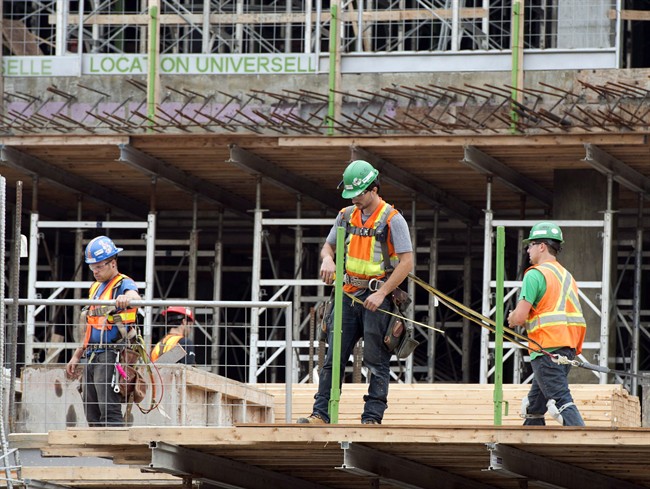Once again, the Canadian job market has smashed expectations, with nearly 80,000 jobs added in November, compared to a consensus forecast of 10,000 net new positions.

The economy created 79,500 jobs in November, enough to drive down the unemployment rate from 6.3 per cent to 5.9 per cent, the lowest it’s been since February 2008, before the onset of the financial crisis.
READ MORE: Here are the jobs with the highest — and lowest — wage growth in Canada
The increase also marked Canada’s 12th straight month of positive job creation as the country posted its best 12-month performance in 10 years.
The report says employment rose 2.1 per cent in the 12 months leading up to November as the economy added 390,000 net jobs – with all the gains driven by full-time work. The labour market added 441,400 full-time positions year-over-year for an increase of three per cent and its strongest 12-month period of full-time job creation in 18 years.
In November, the bulk of national employment growth was in Ontario, which alone added 44,000 new positions.
READ MORE: Here are the provinces with the highest and lowest disposable income growth, according to StatsCan
In a separate report, StatCan also said the Canadian economy expanded at an annualized rate of 1.7 per cent in the third quarter of 2017 as weaker exports applied downward pressure on growth.
The increase in real gross domestic product was driven by a one per cent expansion in household spending. But it says exports fell on a quarter-over-quarter basis by 2.7 per cent, which included a 3.4 per cent decline in goods exports that followed three quarters of growth.
“It’s official, Canada’s economy has cooled from the rip-roaring pace seen in the year to mid-2017,” BMO economist Benjamin Reitzes wrote shortly after the data release.
Economists had widely anticipated a slowdown in the July-to-September period after the breakneck pace of economic expansion registered in the first half of the year.
Although growth is expected to pick up in the last three months of the year, Canada is in for quarterly growth averaging 2 per cent next year, compared to an average of 3.6 per cent in the period between mid-2016 and mid-2017, Reitzes said.
StatCan also made a downward revision to Canada’s real GDP growth for the second quarter — dropping it to an annualized rate of 4.3 per cent compared with its initial reading of 4.5 per cent.
Economists had expected growth in the third quarter to come in at an annualized rate of 1.6 per cent, according to Thomson Reuters. The third-quarter number was a little weaker than the Bank of Canada’s October forecast, which predicted real GDP to ring in at 1.8 per cent. The central bank is projecting real GDP to expand by 2.5 per cent in the fourth quarter.
– With files from the Canadian Press




Comments